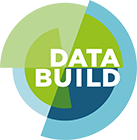Environmental assessment has a major impact on construction projects
As the legal tussle between Amazon and local government in the Western Cape shows, there is no doubt that erecting a building involves a great deal more than merely organising labour force, permits and meticulous project management. Added to the mix is the Environmental Impact Assessment (EIA) tool and in fact, this has the power to make or break deals in commercial enterprise construction says Morag Evans, CEO of Databuild.
At the heart of the EIA tool is sustainability. The EIA tool is a mechanism by which stakeholders in the building construction industry can effectively identify and evaluate the impacts of a potential construction project. Of equal importance is the tool’s second function – based on a comprehensive critique of the positive and negative impacts, it enables stakeholders to develop plans to mitigate risks and secure the benefits.
EIA comes into play the moment a project is identified as likely to have a significant effect on the environment. One of the major benefits and justifications for the EIA tool is that it helps to manage the resources required for the project and channel these resources effectively to address core issues that may or may not arise. These include pollution, demolition or destruction of natural habitat and much more.
Evans explains that as is the case with any system, there are strengths and weaknesses that stakeholders need to be aware of. In the building construction industry, there is a fine line between right and wrong, and ignorance can be very costly.
“Our market research shows that irrespective of where your interests lie in building construction, it is all a balancing act really. We’ve noted strengths linked to EIA as being that it is relevant and applicable to all sized projects, it helps to set the right foundation for a project in terms of eco-consciousness, socio-economic impact and other critical factors, and it is a public demonstration of intent – companies who prescribe and apply the assessment show that they have more than the bottom line in mind,” says Evans.
However, there are pitfalls, warns Evans. “It is interesting to look at a website like Bizfluent.com, which lays out nicely for browsers what it feels are the good points and what are the pain points. For example, the website offers a detailed description of how much the system relies on technical information and that EIA spells delay for any project of any size, at any phase.”
And of course the EIA is a process, which means that it requires due diligence and complete evaluation is required for the whole undertaking to mean anything.
There are a number of online resources that outline the relevance of due diligence, evaluation and follow-up.
Tandfonline.com offers the reader a thorough perspective in terms of independent verification and outlines an interesting argument under the heading “EIA follow-up frameworks that may influence independence requirements of verifiers”.
Evans adds that with so much at stake and so many stakeholders involved, it is essential to have a clear strategy and environment conducive to negotiations and mutual benefit.


